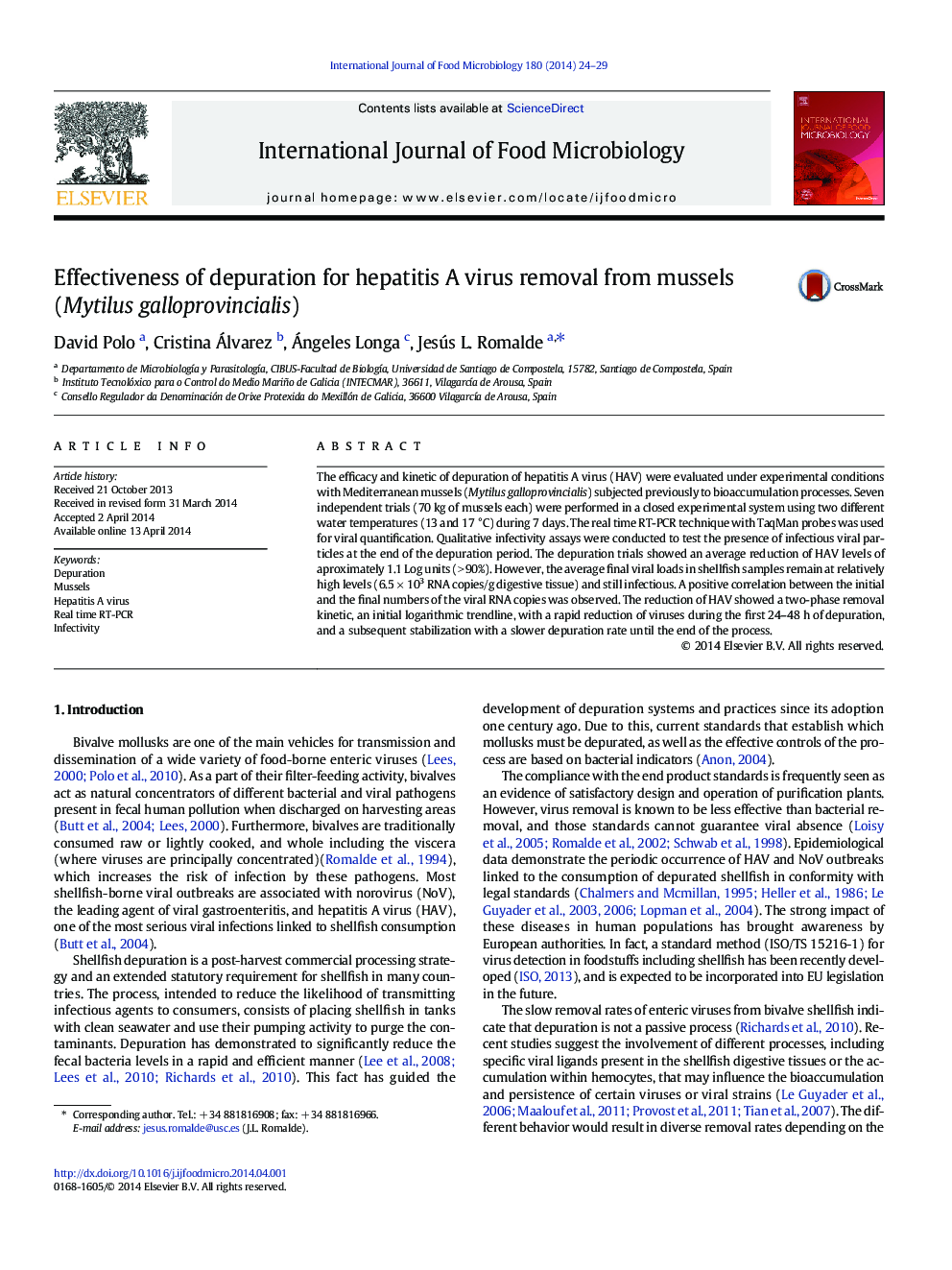| Article ID | Journal | Published Year | Pages | File Type |
|---|---|---|---|---|
| 4366923 | International Journal of Food Microbiology | 2014 | 6 Pages |
•Efficacy and kinetic of HAV depuration were evaluated under experimental conditions.•An average reduction in HAV levels of 1.1 Log units (> 90%) was achieved.•HAV showed a two-phase removal kinetic, initial rapid reduction and stabilization.•Viral loads after 7 days of depuration are still infectious.
The efficacy and kinetic of depuration of hepatitis A virus (HAV) were evaluated under experimental conditions with Mediterranean mussels (Mytilus galloprovincialis) subjected previously to bioaccumulation processes. Seven independent trials (70 kg of mussels each) were performed in a closed experimental system using two different water temperatures (13 and 17 °C) during 7 days. The real time RT-PCR technique with TaqMan probes was used for viral quantification. Qualitative infectivity assays were conducted to test the presence of infectious viral particles at the end of the depuration period. The depuration trials showed an average reduction of HAV levels of aproximately 1.1 Log units (> 90%). However, the average final viral loads in shellfish samples remain at relatively high levels (6.5 × 103 RNA copies/g digestive tissue) and still infectious. A positive correlation between the initial and the final numbers of the viral RNA copies was observed. The reduction of HAV showed a two-phase removal kinetic, an initial logarithmic trendline, with a rapid reduction of viruses during the first 24–48 h of depuration, and a subsequent stabilization with a slower depuration rate until the end of the process.
